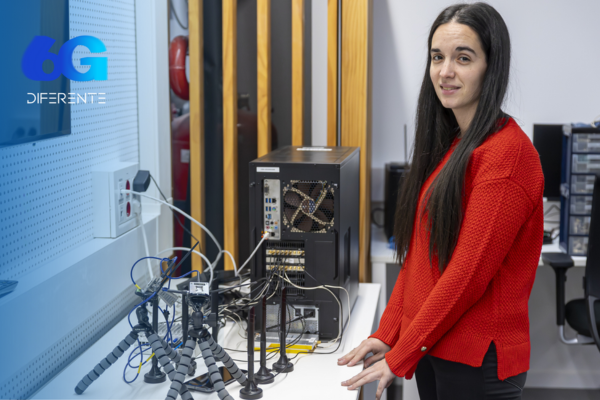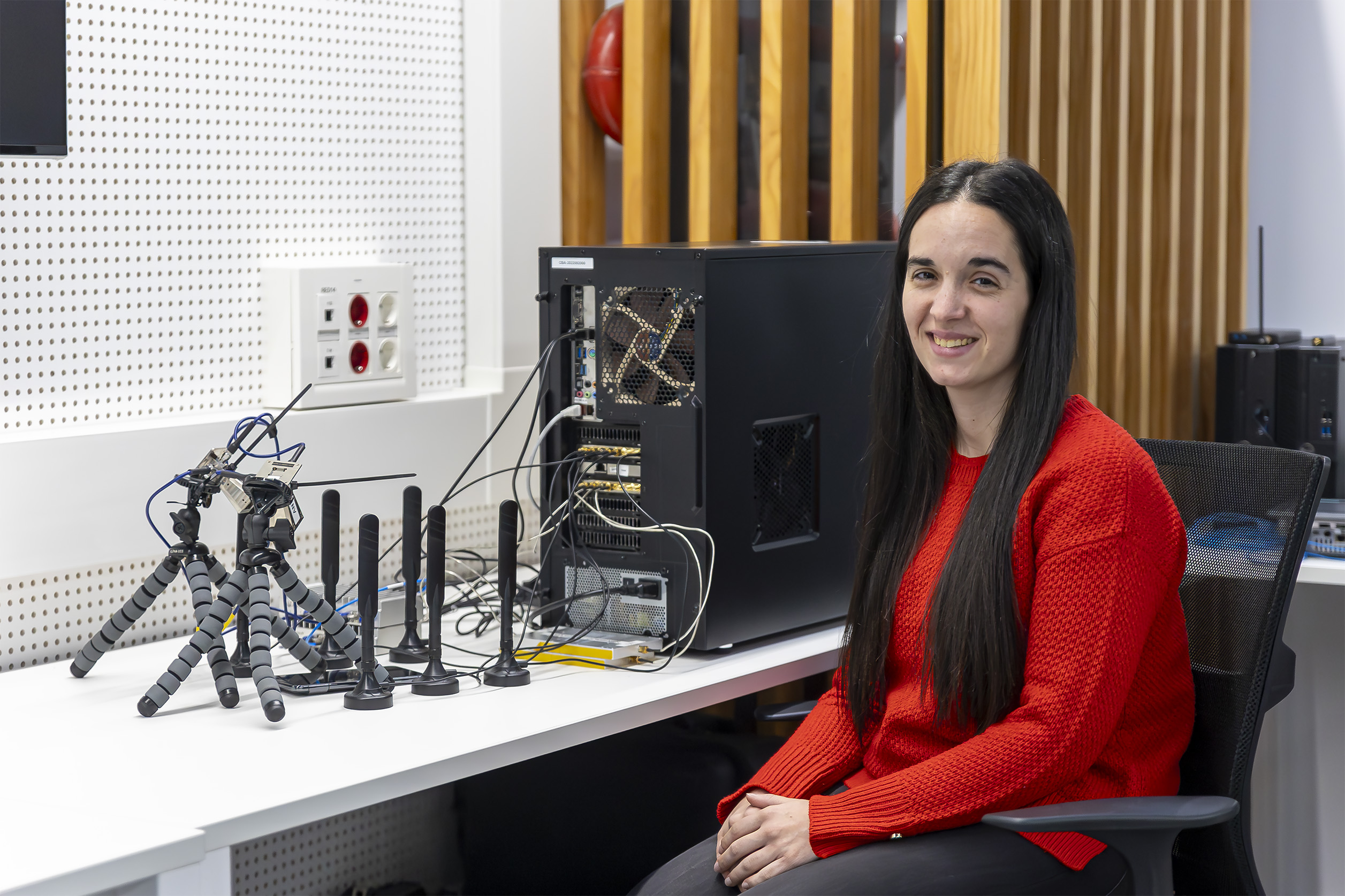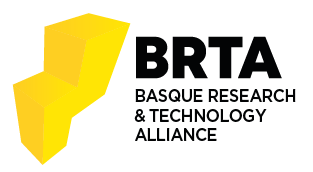“The 6GDIFERENTE project is at the forefront of the evolution towards 6G, exploring pioneering applications that go beyond the current capabilities of 5G.”
We interviewed Zaloa Fernandez, Researcher in the Digital Media & Communications area at Vicomtech and part of the 6GDIFERENTE project team.

30.01.2025
In an increasingly interconnected world, the evolution of communication networks plays a key role in the way we interact with technology and with each other. Research into advanced communication technologies not only enables the performance of today's networks to be improved, but also lays the groundwork for the arrival of the next generation: 6G.
In this context, the 6GDIFERENTE project seeks to explore and validate new solutions that will enable more immersive and efficient telecommunications experiences. To better understand its impact and the progress achieved so far, we talked to Zaloa Fernández, who shares her experience and vision about the future of mobile networks and the transformative capacity of the 6GDIFFERENT project.
1. Introduce yourself and tell us a little about your professional background.
I am Zaloa Fernández, a researcher at Vicomtech with experience in the deployment and testing of 5G networks and emerging technologies. My professional career focuses on projects that combine advanced wireless communications with innovative applications, exploring the integration of technologies such as mmWave, network slicing and network orchestration to enable new use cases. I obtained a Bachelor's Degree in Telecommunication Systems Engineering and a Master's Degree in Embedded Systems at the Polytechnic School of Mondragon Unibertsitatea, where I also completed my PhD in Applied Engineering. Throughout my career, I have worked on the development of advanced connectivity solutions, from media access optimization and dynamic radio resource management to the application of network slicing techniques and network virtualization in 5G. In addition, I have worked on mobility solutions covering aspects such as handover and roaming, contributing to the development of flexible and adaptive architectures for next-generation networks.
1. What role do you play as a researcher in the 6GDIFERENTE project and in the development of the use case?
In the 6GDIFFERENT project, I am involved in the development and validation of advanced communication technologies to enable new use cases in mobile networks. While my work spans several areas within the project, a key part of my work focuses on investigating and evaluating the performance of mmWave networks in the use case of volumetric video and SocialXR applications. I collaborate in the design of experimental tests, the configuration and optimization of the communications infrastructure and the analysis of the challenges that these technologies present, with the aim of providing knowledge on their feasibility and laying the foundations for future 6G networks. Within this context, I work in the integration and testing of mmWave communications equipment, evaluating its behavior and performance in real scenarios.
2. What role do you think 6G networks will play in the evolution of immersive communications and how are current technologies such as mmWave setting the stage for that future?
6G networks will be the foundation for the immersive experiences of the future, enabling not only higher speed, but also ultra-low latency, massive connectivity and advanced network intelligence to dynamically adapt to the needs of each application. mmWave technologies are critical in this path, as they are opening up access to higher frequency spectrums that enable the transmission of large volumes of data, a must for applications such as volumetric video. However, current limitations, such as penetration and range, are helping to identify key areas of improvement for next-generation network design.

Test Infrastructure at Vicomtech for volumetric video transmissions
3. The test infrastructure at Vicomtech has enabled the first volumetric video transmissions. What results have been obtained so far and what learnings stand out from these tests?
The test infrastructure at Vicomtech has enabled the first real-time volumetric video transmissions over 5G Standalone (SA) networks in mmWave bands, providing key insights into the actual performance of these technologies in controlled environments. To this end, we have deployed a 5G SA network with two cells: one in sub-6 GHz (N78 band) and one in mmWave (N258 band), with a configuration that achieves a theoretical throughput of approximately 1.1 Gbps on the downlink and 1 Gbps on the uplink. In long-term tests with commercial devices, we have recorded speeds of up to 700 Mbps downlink and 650 Mbps uplink.
While we have achieved throughput rates close to theoretical limits and adequate quality for volumetric video streams, these tests have also highlighted key challenges, such as mmWave's high sensitivity to obstacles and the need to optimize device alignment to maximize throughput.
4. How do you think the 6GDIFERENTE project will have a transformative capacity in the evolution of mobile communication networks?
The 6GDIFERENTE project is at the forefront of the evolution towards 6G, exploring pioneering applications that go beyond the current capabilities of 5G. It aims to design an advanced, scalable and low-cost mobile communications infrastructure to address novel use cases. The project focuses not only on advancing the efficiency of wireless communications, but also on integrating priority technologies such as non-terrestrial networks, millimeter waves, quantum sensing and artificial intelligence. At the same time, 6GDIFERENTE is working on the verticalization of innovative solutions applicable to industrial and academic sectors, driving the development of 6G networks through demonstrators in areas such as SocialXR, where new forms of interaction and real-time volumetric video streaming are explored. By addressing complex use cases, the project is identifying technological limitations, developing new solutions and validating advanced infrastructures. This approach not only advances the design of more robust and adaptable networks, but also contributes to the innovation ecosystem that will define how the communication networks of the future will support more immersive and collaborative experiences.







